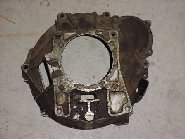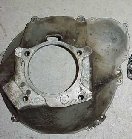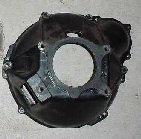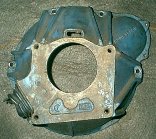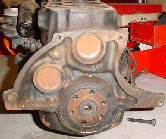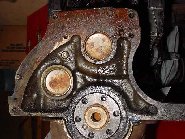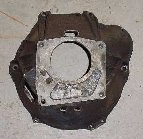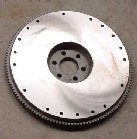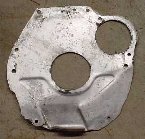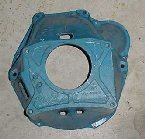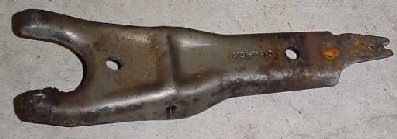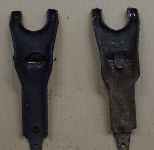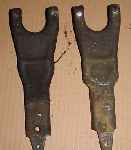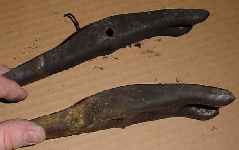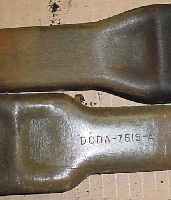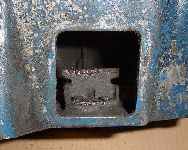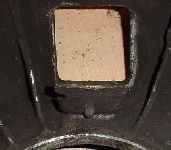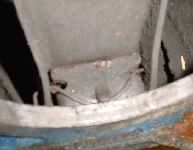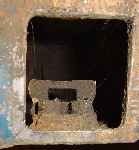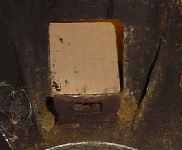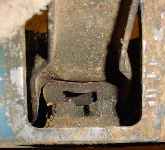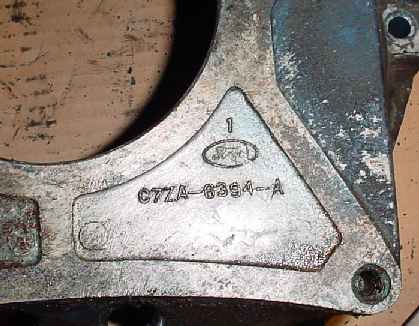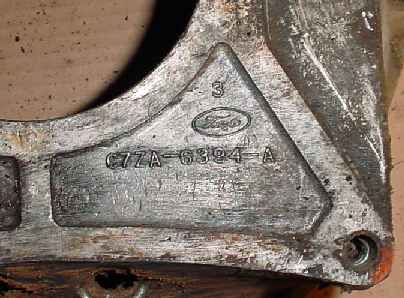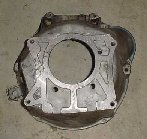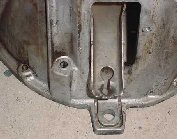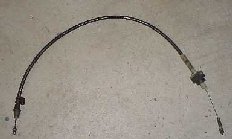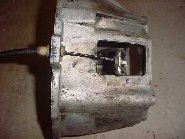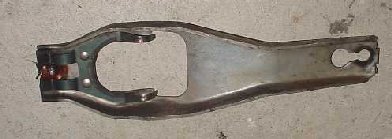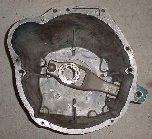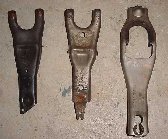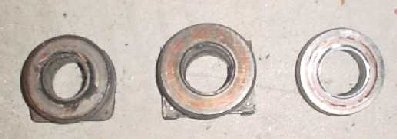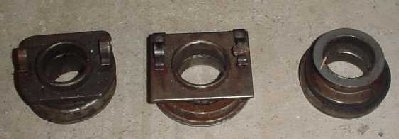The first was used behind the Econoline vans and
possibly the Fairlane as well. It's bolt pattern is that of the early
Toploader pattern (commonly referred to as the V8 5-bolt pattern),
however the input shaft length spacing and input hole are incorrect for the
Toploader, so other Borg Warner transmissions were used there.
The second bellhousing is that of the English Dagenham
4-speed. To mount this transmission, it bolts from the inside of the
bellhousing out. Therefore, the holes in the bellhousing are drilled out for
clearance holes. The transmission must be mounted to the bellhousing before
the bellhousing is installed onto the motor.
The third bellhousing is the 2.77 bellhousing. The casting of
the Dagenham and the 2.77 bellhousing are the same, however, notice that the
transmission mounting
hole drill pattern is different between the two. The 2.77 3-speed
transmission was by far the most popular manual transmission choice. It is
easily recognized by it 4-bolt top cover inspection plate and the
non-synchronized 1st gear. This means you must be at a complete stop in order
to place the car into 1st gear without grinding it.
The forth bellhousing was used behind possibly the Falcon,
Fairlane and others. This bellhousing is cast iron (as opposed to
aluminum), and is extremely heavy, so it may have been used for heavy-duty
applications. It seems to have the same transmission mounting as the 66 bell, but is
shorter and has a 3-bolt starter vs. the 66's 2-bolt starter.
The 2.77 held up well behind the 144 and 170, but could be
taxed by the 200. With mild driving, it would do ok, but with a mildly built
200 and some aggressive driving, it would break. 90% of the failures with
these transmissions occurs in the 2nd gear
synchronization section. Generally, it would jam itself into second gear
and would stay there until it was broken down for a rebuild. Parts are
becoming scarce for these transmissions and rebuilding costs can be
astronomical. Repair/rebuild shops may not even be able to get parts and if
the can, may not want to guarantee their work.
These 4 bellhousings all share the same 8½" recessed
flywheel, block plate, clutch fork and 3-bolt starter.
In 1966, Ford changed the casting of the block to include two
additional upper holes in the block for a larger bellhousing and
flywheel. Shown is a C5## block on the left and a C6## block on the
right. The C6 and later blocks are known as the 'dual pattern'
block. The above bellhousings will bolt to the dual-pattern block, using
the flywheel, clutch fork and block plate specific to the
bell.
After the SROD, Ford also had a T-4. The T-4 shares a
lot in common with the T-5, but does not have an overdrive. In 1981,
Ford produced a bellhousing that would bolt up to the 200 that was a cable
bell, and provided the proper offset and mounting pattern for the T-4.
Because the T-4 case shared mounting points with the T-5, a T-5 will bolt up
to this bell. Notice that the casting between the SROD and T-4 bell are
the same, but the transmission mounting holes were drilled in different
places. Also, the center hole of the T-4 bell was opened to 4.91" vs.
the 4.85" of the SROD bell.
The one on the left is for the 2.77, the one in the
middle is for the '67 and later, and the one on the right is for the cable
style bellhousings.
During the 70's and into the 80's, there was tons of pressure
on the automakers to produce more efficient, less emissions vehicles. If
you research, you'll find that the power numbers and C.R. ratios of motors
throughout those years dropped drastically, and more emission's control
devices appeared on the cars. Because of this, the automakers felt that
a car with an automatic transmission inherently produced less emissions, so
most cars coming out of Detroit were automatics. Therefore, it can be
rather difficult to find some of these later-style bellhousings as not many
were produced. The cars of that era also aren't desirable for restoring,
so many go straight to the crusher.
In the early ‘80s, bellhousing pattern of the 200 block was
changed again. You can recognize this 200 as having 2/3 of a V8 bell
pattern and a low mounted starter. I don't believe a manual transmission
was ever offered behind the big-belled 200.
